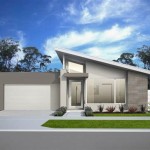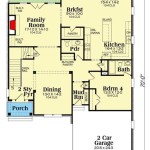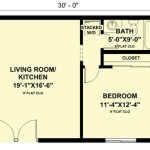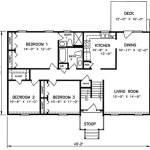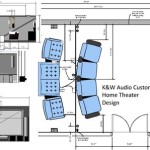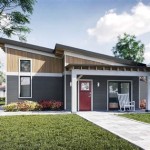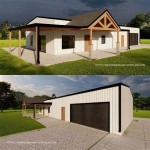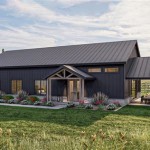Basic Ranch Home Floor Plans: A Comprehensive Overview
Ranch homes, characterized by their single-story layout and open floor plans, have remained a popular choice for homeowners since their rise in the mid-20th century. Their accessibility, simplicity, and adaptability to various lifestyles contribute to their enduring appeal. Understanding the fundamental elements of basic ranch home floor plans is crucial for prospective buyers, builders, and remodelers alike.
These homes are often synonymous with suburban living, embodying a casual and comfortable aesthetic. The horizontal orientation and low-pitched roofs are defining architectural features. Internally, ranch homes prioritize functionality and ease of movement, catering to a wide range of occupants, from young families to aging individuals.
Examining the common characteristics, variations, and design considerations of basic ranch home floor plans provides a foundation for appreciating their versatility and practical benefits. This analysis encompasses space utilization, layout configurations, and adaptability to individual needs and preferences.
Key Characteristics of Ranch Home Floor Plans
Ranch homes are typically defined by several core characteristics that distinguish them from other architectural styles. Understanding these features is essential for identifying and appreciating the fundamental principles of ranch home design.
Single-Story Layout: The most defining characteristic of a ranch home is its single-story construction. This eliminates the need for stairs, making it easily accessible for individuals of all ages and mobility levels. This single-level design contributes to a sense of openness and encourages seamless transitions between interior spaces. Furthermore, the absence of stairs simplifies maintenance and cleaning.
Open Floor Plan: Ranch homes often feature an open floor plan, particularly in the common living areas such as the living room, dining room, and kitchen. This design promotes social interaction and creates a sense of spaciousness. The interconnectedness of these areas allows for flexible furniture arrangements and facilitates a natural flow of movement. This open concept is particularly advantageous for entertaining guests and accommodating large gatherings.
Attached Garage: An attached garage is a common feature of ranch homes, providing convenient access to vehicles and additional storage space. The garage is typically located on the front or side of the house, often integrated seamlessly into the overall design. This feature adds to the practicality and convenience of the ranch home lifestyle, offering protection from the elements and secure parking.
Horizontal Emphasis: The architectural design of ranch homes emphasizes horizontal lines, creating a sense of groundedness and stability. This is achieved through the low-pitched roof, elongated façade, and minimal ornamentation. The horizontal orientation contributes to the home's relaxed and unassuming aesthetic, blending seamlessly with the surrounding landscape.
Modest Exteriors: Ranch homes typically feature modest exteriors, characterized by simple lines and minimal ornamentation. Common exterior materials include brick, wood siding, and stucco. The emphasis is placed on functionality and practicality rather than elaborate architectural details. The understated exterior contributes to the home's affordability and ease of maintenance.
Common Ranch Home Floor Plan Variations
While sharing core characteristics, ranch home floor plans exhibit various configurations and variations to suit different lot sizes, lifestyles, and architectural preferences. Exploring these variations provides insight into the adaptability and versatility of the ranch home design.
Linear Ranch: The linear ranch is characterized by a rectangular layout with rooms situated along a single hallway. This design is often used for smaller homes with a narrow footprint. The linear arrangement allows for efficient use of space and simplifies construction. However, it may also limit natural light and cross-ventilation in some areas of the house.
L-Shaped Ranch: The L-shaped ranch features two wings that intersect at a right angle, creating a more dynamic and visually appealing exterior. This configuration allows for greater separation between living and sleeping areas, enhancing privacy and reducing noise transmission. The L-shape also provides opportunities for creating outdoor living spaces, such as patios and decks, in the sheltered area between the wings.
U-Shaped Ranch: The U-shaped ranch encloses a central courtyard, providing a private and protected outdoor space. This configuration is ideal for maximizing natural light and creating a strong connection between indoor and outdoor living. The courtyard can be used for gardening, entertaining, or simply relaxing. The U-shape also enhances privacy and provides a sense of seclusion.
Courtyard Ranch: Similar to the U-shaped ranch, the courtyard ranch features a central courtyard enclosed by the house. However, the courtyard may be larger and more elaborate, incorporating features such as swimming pools, fountains, and outdoor kitchens. This design is often used for larger, more luxurious ranch homes. The courtyard becomes an integral part of the living space, blurring the boundaries between indoors and outdoors.
Split-Level Ranch: Although technically not a single-story design, the split-level ranch is often considered a variation of the ranch home. It features multiple levels connected by short flights of stairs, creating a staggered floor plan. This design can be advantageous for sloping lots and providing separation between different living areas. However, it may also present accessibility challenges for individuals with mobility limitations.
Design Considerations for Ranch Home Floor Plans
Designing or modifying a ranch home floor plan requires careful consideration of various factors, including space utilization, accessibility, natural light, and energy efficiency. Addressing these considerations ensures a functional, comfortable, and sustainable living environment.
Space Utilization: Efficient space utilization is crucial in ranch home design, particularly given the single-story layout. Maximizing the use of every square foot ensures that the home meets the occupants' needs without feeling cramped or cluttered. This can be achieved through careful planning of room sizes and layouts, incorporating built-in storage solutions, and minimizing unnecessary hallways.
Accessibility: Accessibility is a key consideration for ranch homes, given their appeal to individuals of all ages and abilities. Wide doorways and hallways, level thresholds, and accessible bathrooms are essential features for creating a universally accessible home. These modifications ensure that the home can be easily navigated by individuals with mobility limitations, promoting independence and safety.
Natural Light and Ventilation: Maximizing natural light and ventilation is essential for creating a bright, airy, and comfortable living environment. Large windows and skylights can be used to bring natural light into the home, while strategically placed windows and doors can promote cross-ventilation. This reduces the reliance on artificial lighting and air conditioning, saving energy and improving indoor air quality.
Energy Efficiency: Energy efficiency is an increasingly important consideration for all types of homes, including ranch homes. Incorporating energy-efficient features such as insulation, windows, and appliances can significantly reduce energy consumption and lower utility bills. Solar panels and other renewable energy sources can further enhance the home's sustainability.
Privacy and Noise Control: Ranch homes, especially those with open floor plans, can sometimes lack privacy and suffer from noise transmission. Careful planning of room layouts and the use of soundproofing materials can help mitigate these issues. Separating living and sleeping areas, using solid-core doors, and installing insulation in walls and ceilings can enhance privacy and reduce noise levels.
Outdoor Living Spaces: Ranch homes often benefit from the addition of outdoor living spaces, such as patios, decks, and porches. These spaces provide opportunities for relaxation, entertainment, and connection with nature. Integrating outdoor living spaces into the overall design of the home enhances its functionality and appeal.
Adaptability and Flexibility: Ranch home floor plans should be adaptable and flexible to accommodate changing needs and lifestyles. Designing rooms that can serve multiple purposes, such as a home office that can be converted into a guest room, ensures that the home remains functional and relevant over time. This long-term adaptability adds value to the home and enhances its appeal to a wider range of buyers.
By carefully considering these design factors, homeowners and builders can create ranch home floor plans that are functional, comfortable, and sustainable, meeting the needs of today's lifestyles while honoring the enduring appeal of this classic architectural style.
In summary, basic ranch home floor plans offer a blend of simplicity, accessibility, and adaptability that has contributed to their lasting popularity. Understanding the key characteristics, variations, and design considerations associated with these homes is essential for creating living spaces that are both functional and aesthetically pleasing.

4 Bedroom Classic Ranch House Plan With Covered Porch

Simple To Build Ranch Home Plan 81317w Architectural Designs House Plans

1 400 Square Foot Modular Ranch Home Three Bedrooms And Two Full Bathrooms Signature Building Systems

Ranch Style House Plan 3 Beds 2 Baths 1493 Sq Ft 427 4 Plans Basement

3 Bedroom Modular Home Floor Plans Rba Homes Ranch House

Quincy Ii Ranch Style Modular Home Pennwest Homes Model Hf117 A Custom Built By Patriot S

Simple Ranch House Plans Houseplans Blog Com

Ranch House Plans With Open Floor Blog Homeplans Com

Ranch House Plans With Open Floor Blog Homeplans Com

24x42 Ranch Floor Simple House Plans Open Custom Home

